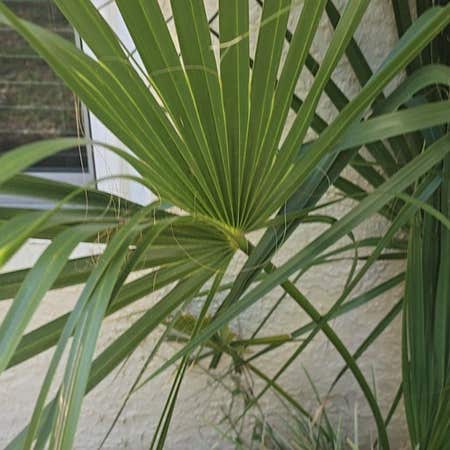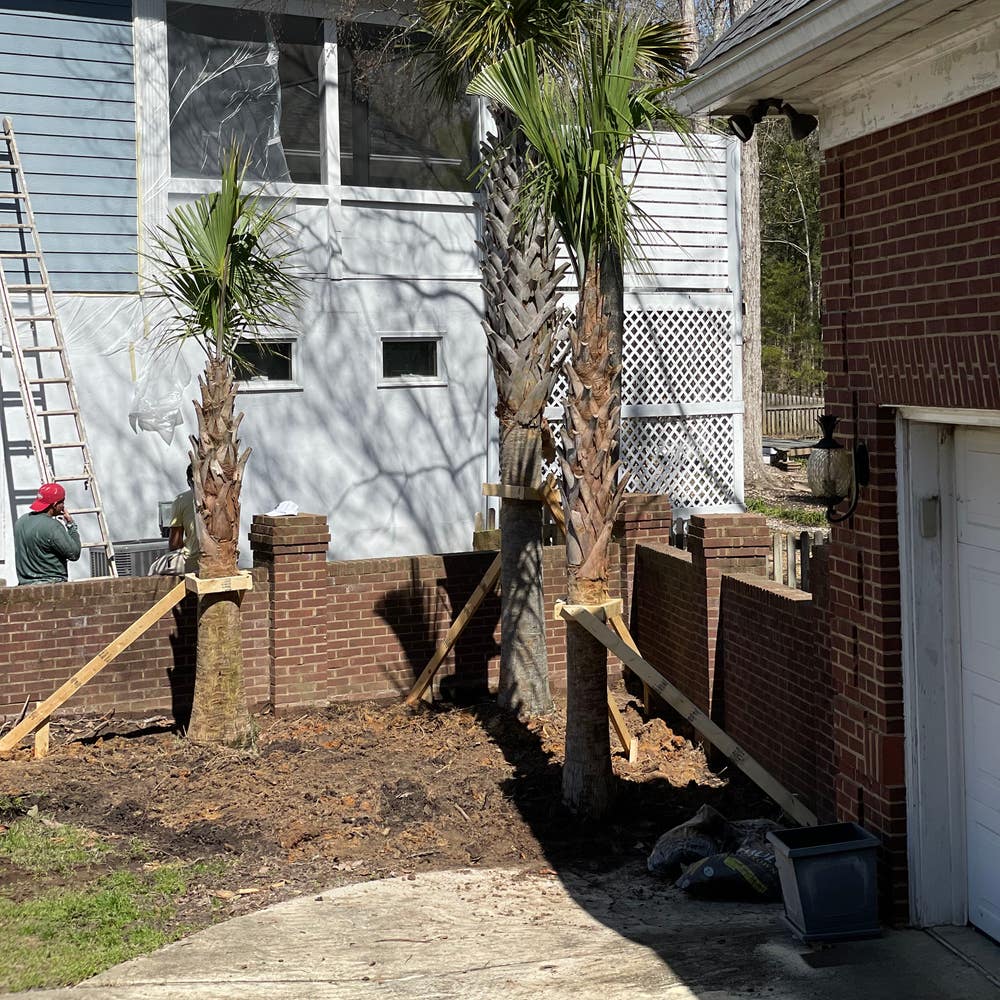





































Sabal Palm
About Sabal Palm
Cabbage Palmetto is a tree in the palm (Arecaceae) family. It is found in maritime forests, marsh edges, and other near-coastal communities. It's not hardy in the mountains, but does well in the coastal forests and marsh edges. The plant is highly salt tolerant and has fragrant flowers.
Taxonomy

Sabal palmetto
Sabal
Arecaceae
Arecales
Also known as
Blue Palmetto, Blue Palmetto, Cabbage palm, Cabbage-palm, Palmetto, Cabbage palmetto, Carolina palmetto, Common palmetto, Swamp cabbage and Sabal palm

How to care for Sabal Palm
How often to water your Sabal Palm

every 9
Sabal Palm needs 0.5 cups of water every 9 when it doesn’t get direct sunlight and is potted in a 5" pot.
Use our water calculator to personalize watering recommendations to your environment or download Greg for more advanced recommendations for all of your plants.

Water 0.5 cups every
9
Finding light for Blue Palmetto in your home

a window
Sabal Palm love being close to bright, sunny windows 😎.
Place it less than 1ft from a south-facing window to maximize the potential for growth.
Sabal Palm does not tolerate low-light 🚫.
Select your region to see how the current weather in your area affects the placement of Sabal Palm in your home 🏡.
How to fertilize Sabal Palm

Most potting soils come with ample nutrients which plants use to produce new growth.
By the time your plant has depleted the nutrients in its soil it’s likely grown enough to need a larger pot anyway.
To replenish this plant's nutrients, repot your Sabal Palm after it doubles in size or once a year—whichever comes first.
-
We just got ours a few weeks ago. The tips of the leaves are brown. Is this bad? #DwarfPalmetto
-
Added some big ones to my oasis today! Everyone, say hello to the three wise men: Jack, Jim, and José🌴🥃☀ #PlantsMakePeopleHappy #PlantAddict #PlantTherapy #OutdoorGrowing #PlantHaul #sabalpalm #BluePalmetto
Care Summary for Sabal Palm

Sabal Palm
 Greg recommends:
Greg recommends:
 Water
Water
0.5 cups every 9 days
 Placement
Placement
< 1ft from a window
 Nutrients
Nutrients
Repot after 2x growth
Based on the 4” pot your plant is in, and that it doesn’t get direct sunlight.

 Trending in your area
Trending in your area
 Similar to Sabal Palm
Similar to Sabal Palm
✨ Discover rare plants

Marquise de Sevigne

Lavandula Pedunculata

Tuber Fleeceflower

Electric Blue Gecko

Ceropegia simoneae

Philodendron 'Glorius'

Eden Climbing Rose

Tillandsia caerulea A…

Echeveria Arrow

Hoya sipitangensis

Fernleaf Lavendar

Kilimanjaro Plant

Pseudorphipsalis 'Blu…

Astroloba congesta

Blue Moon Wisteria

Hoya kalimantan

Sarcochilus fitzgeral…


































